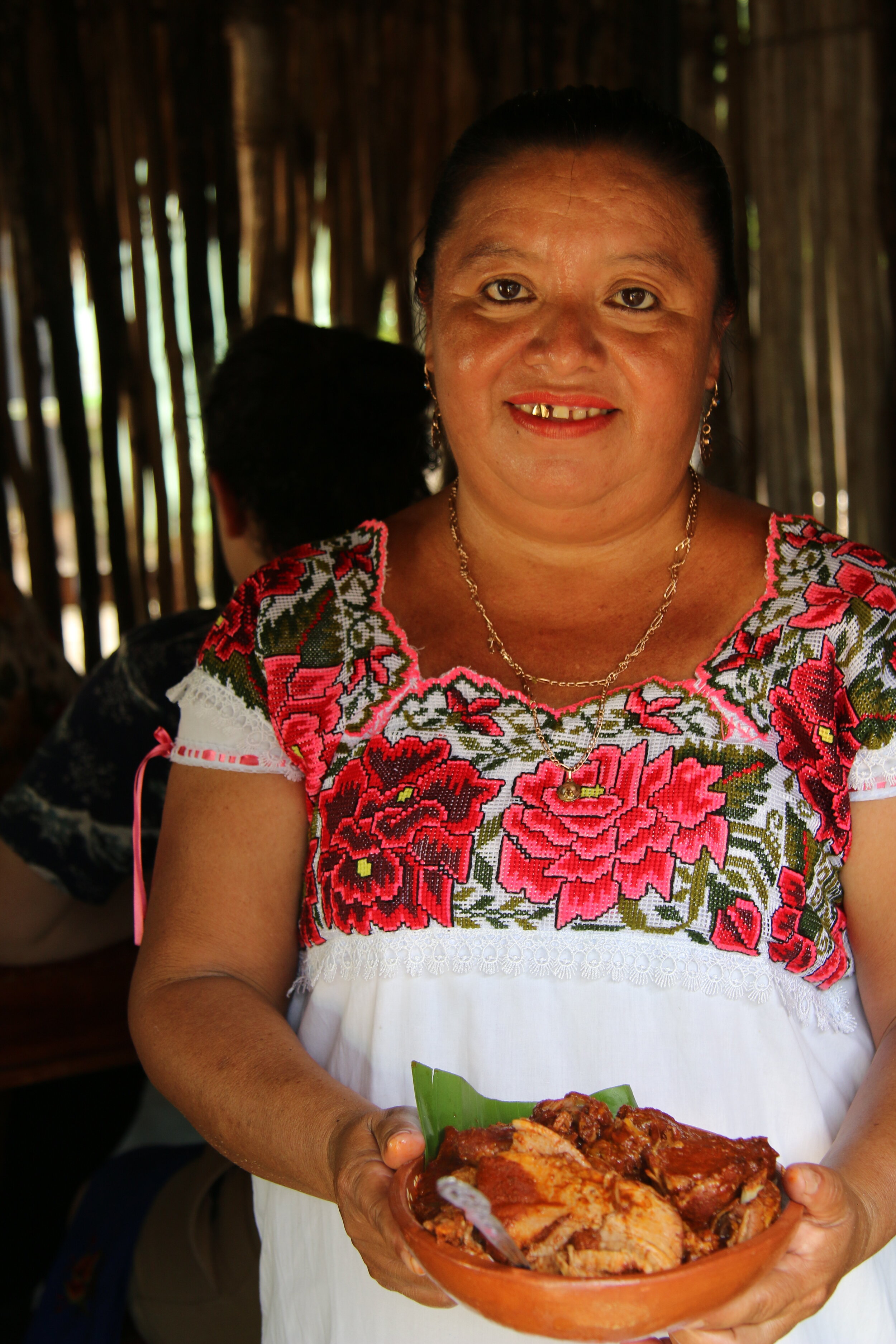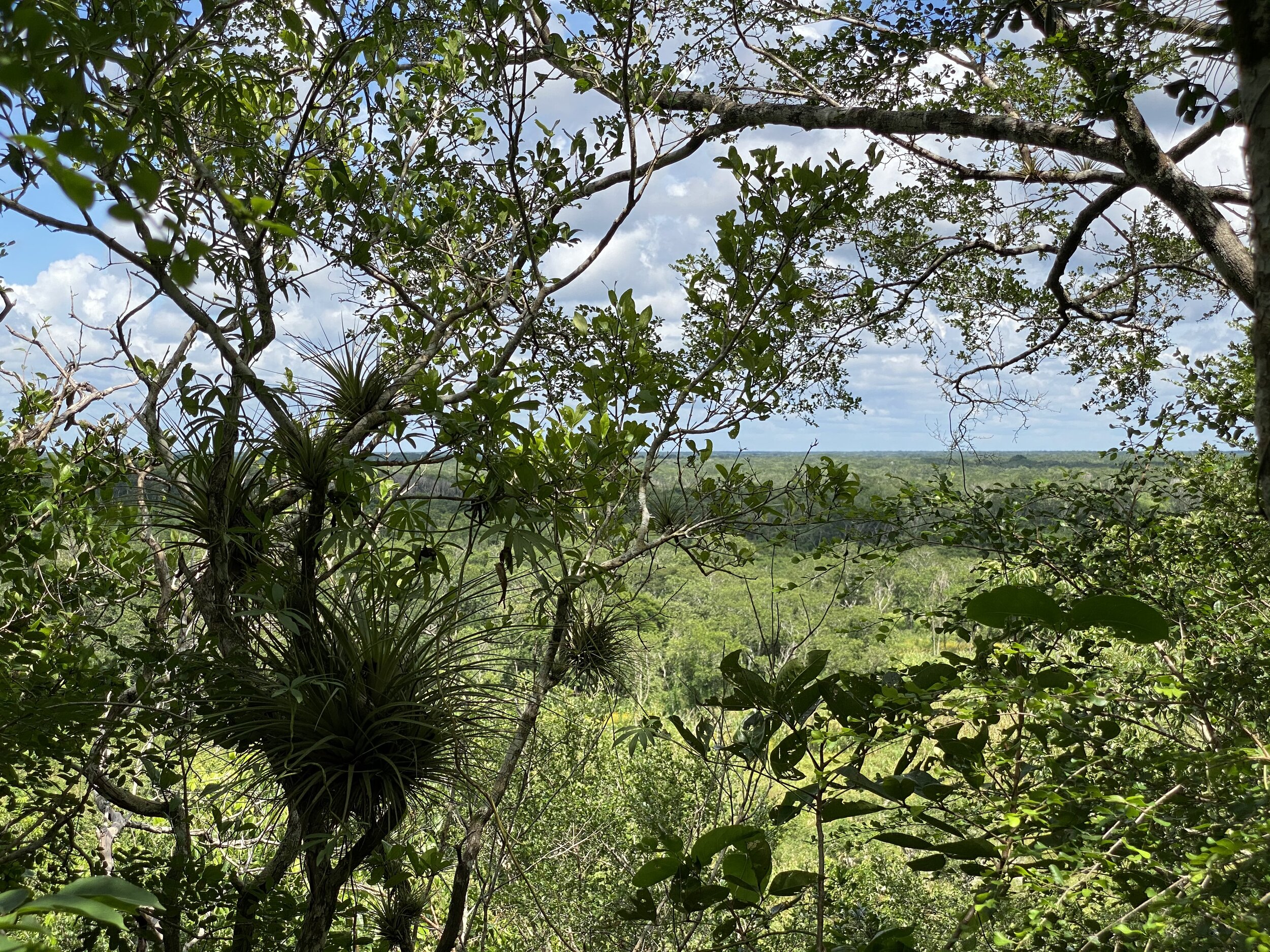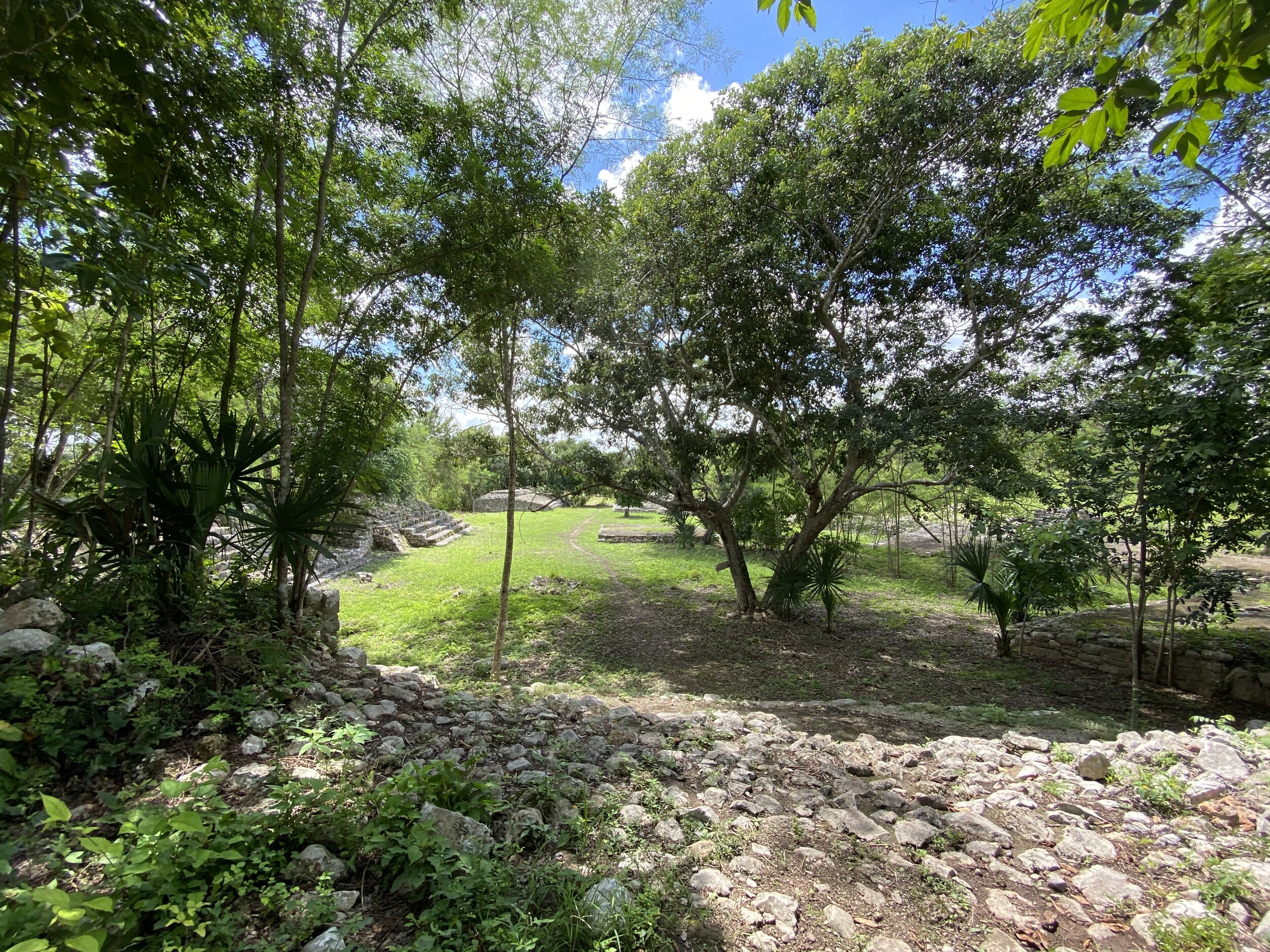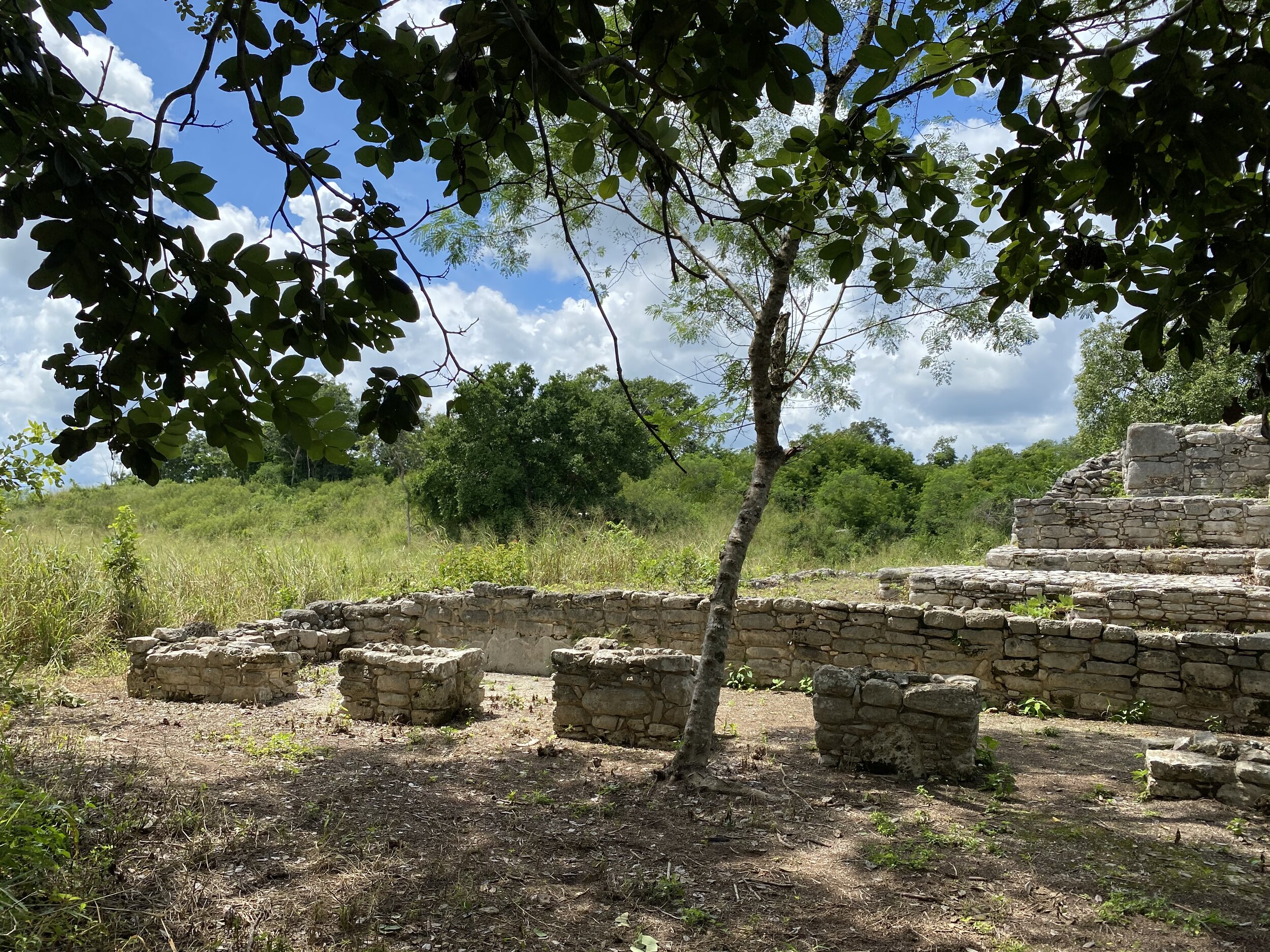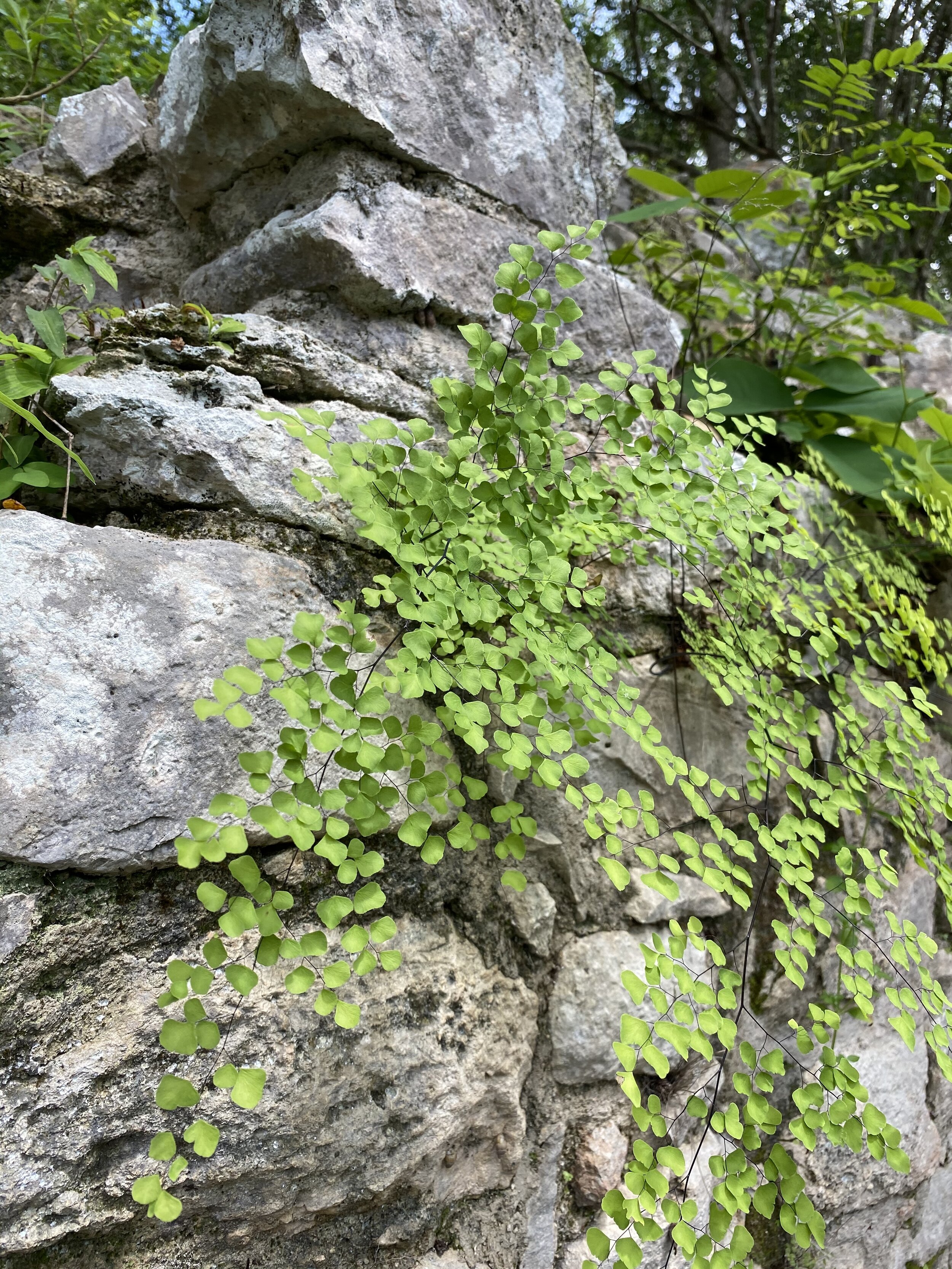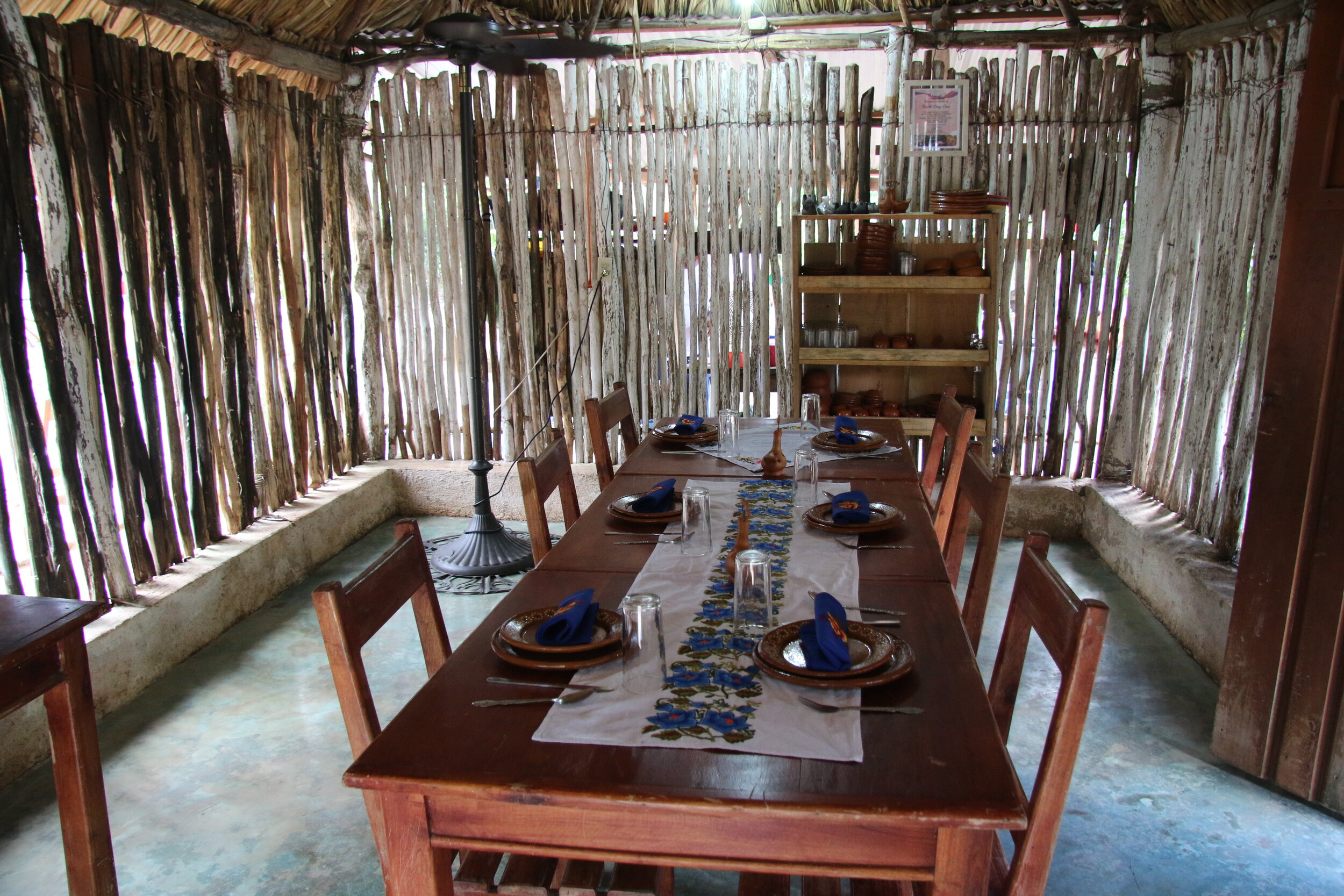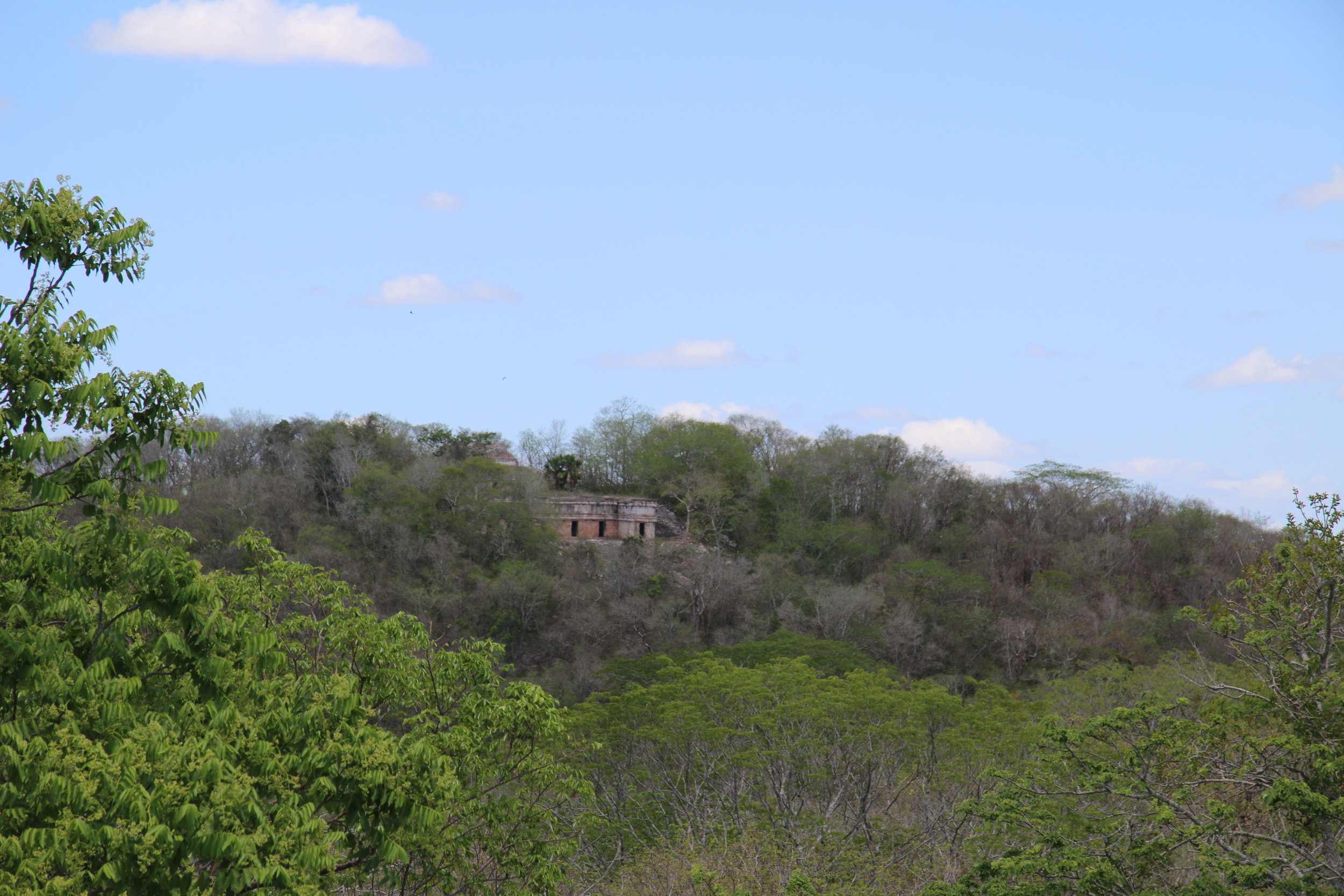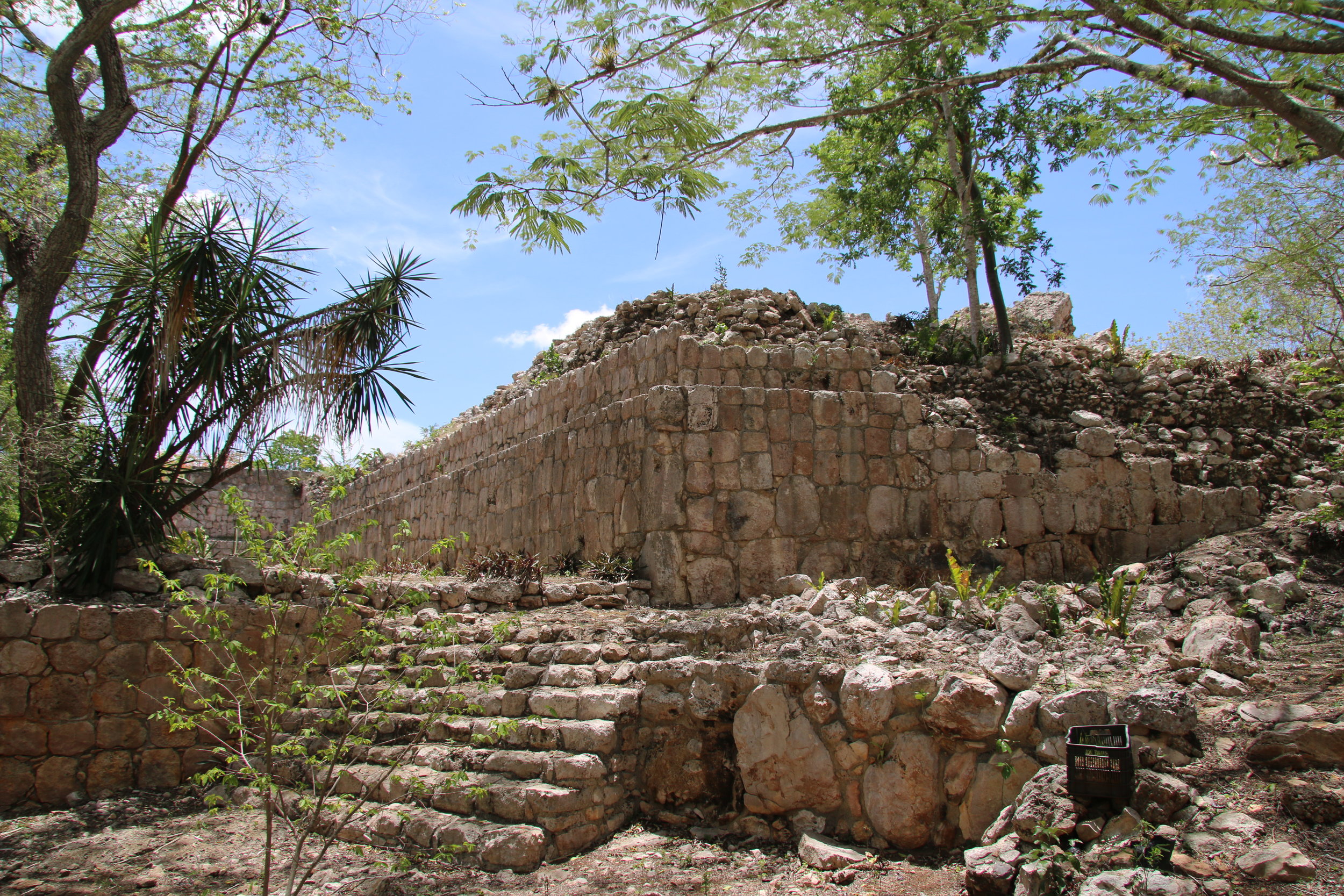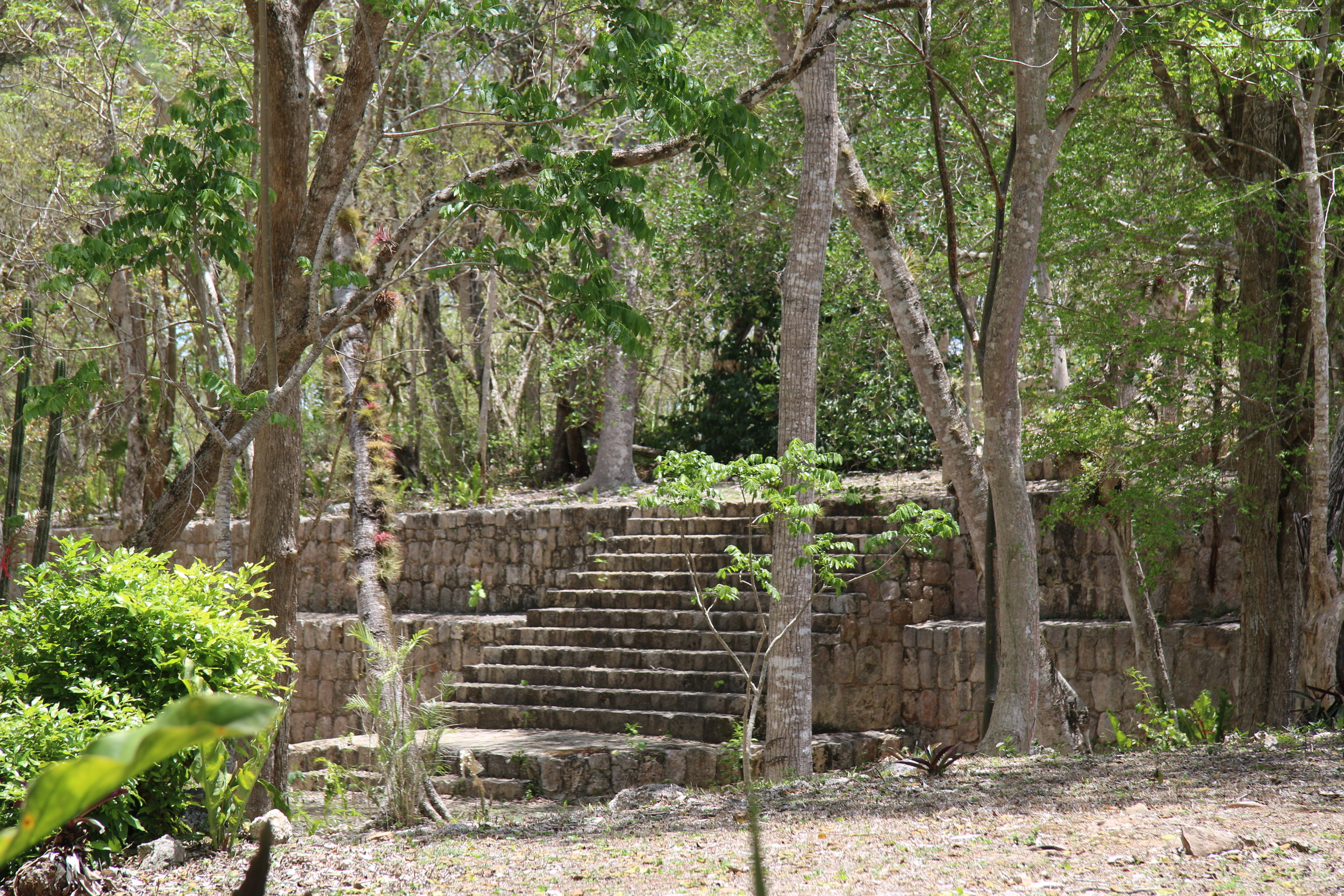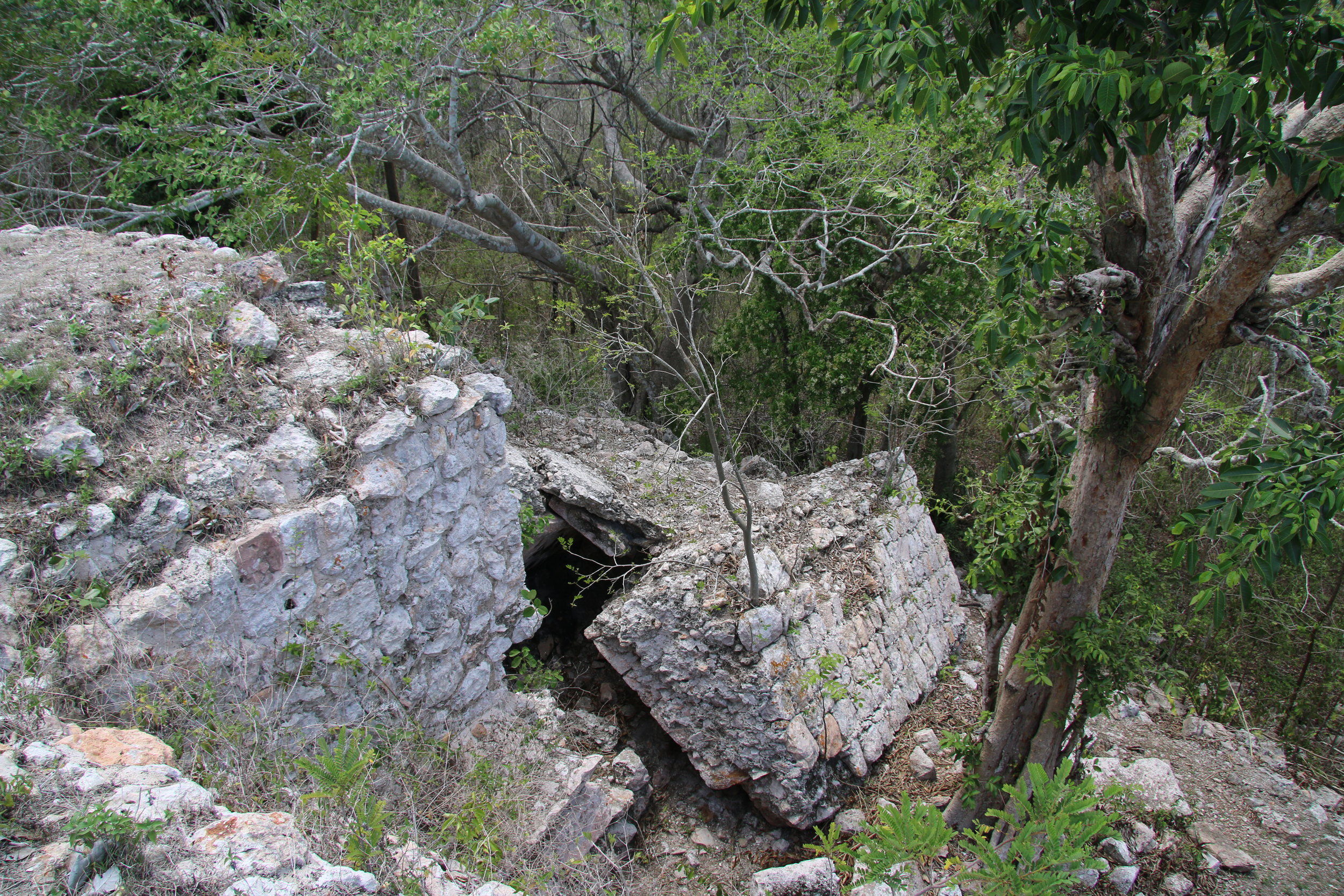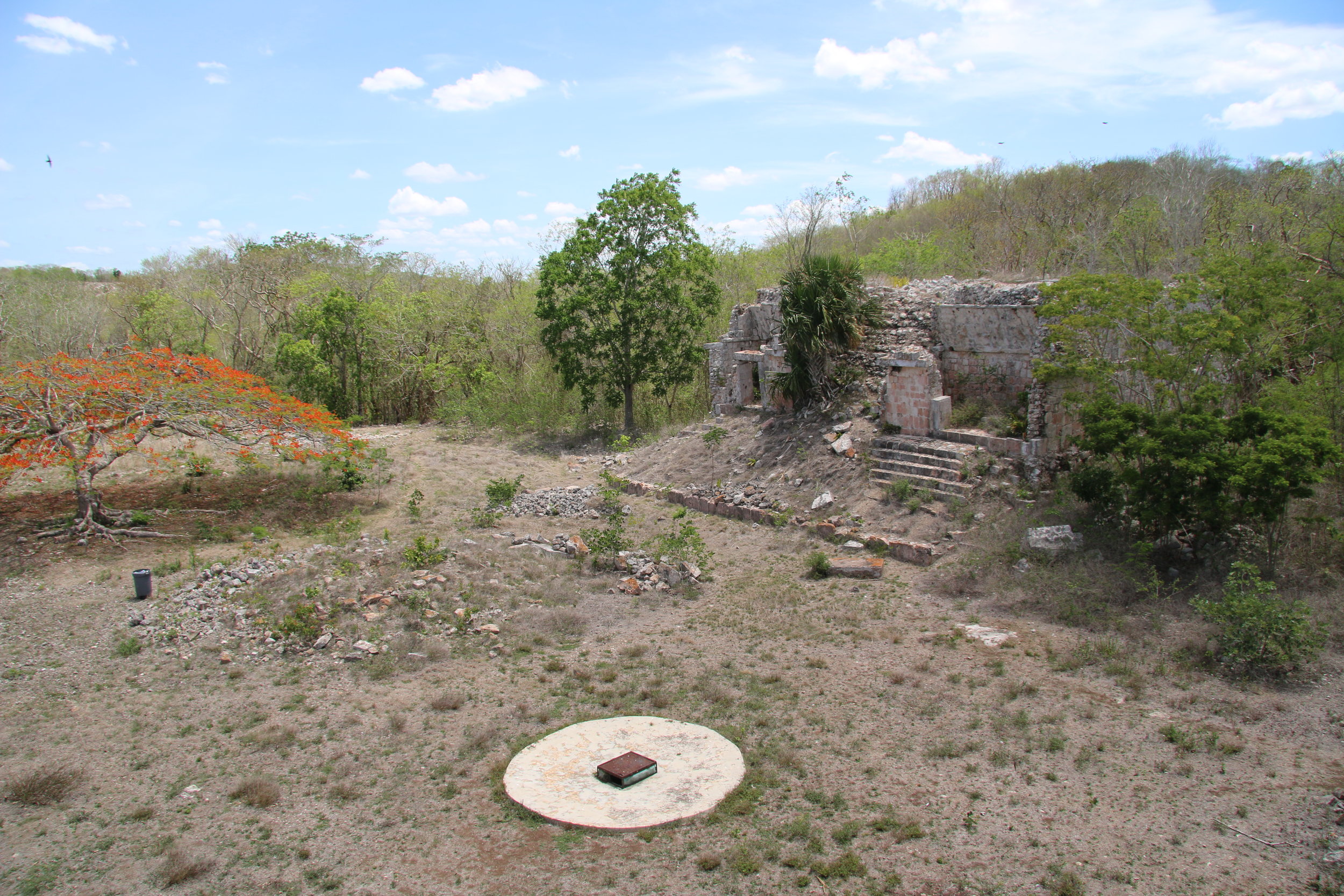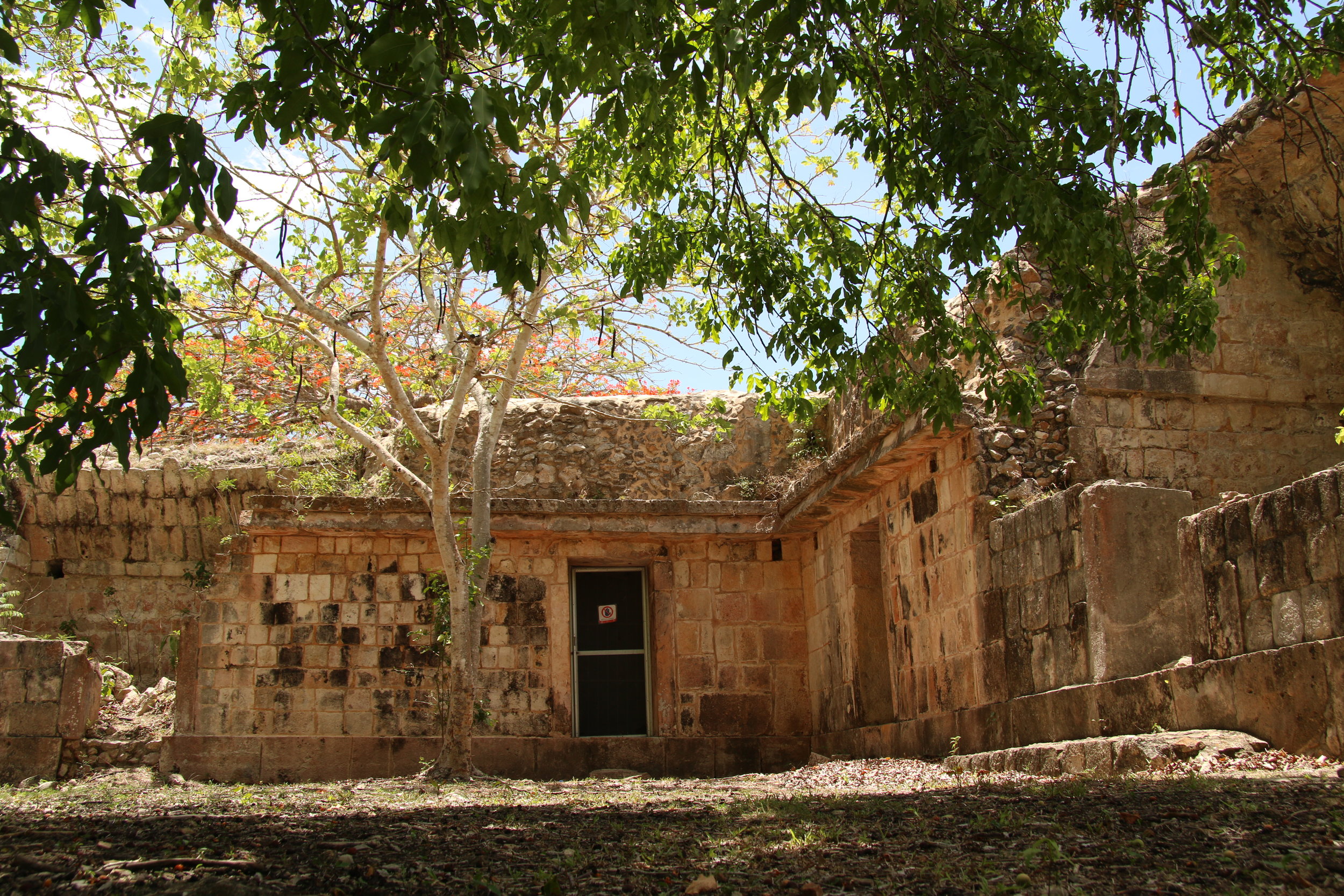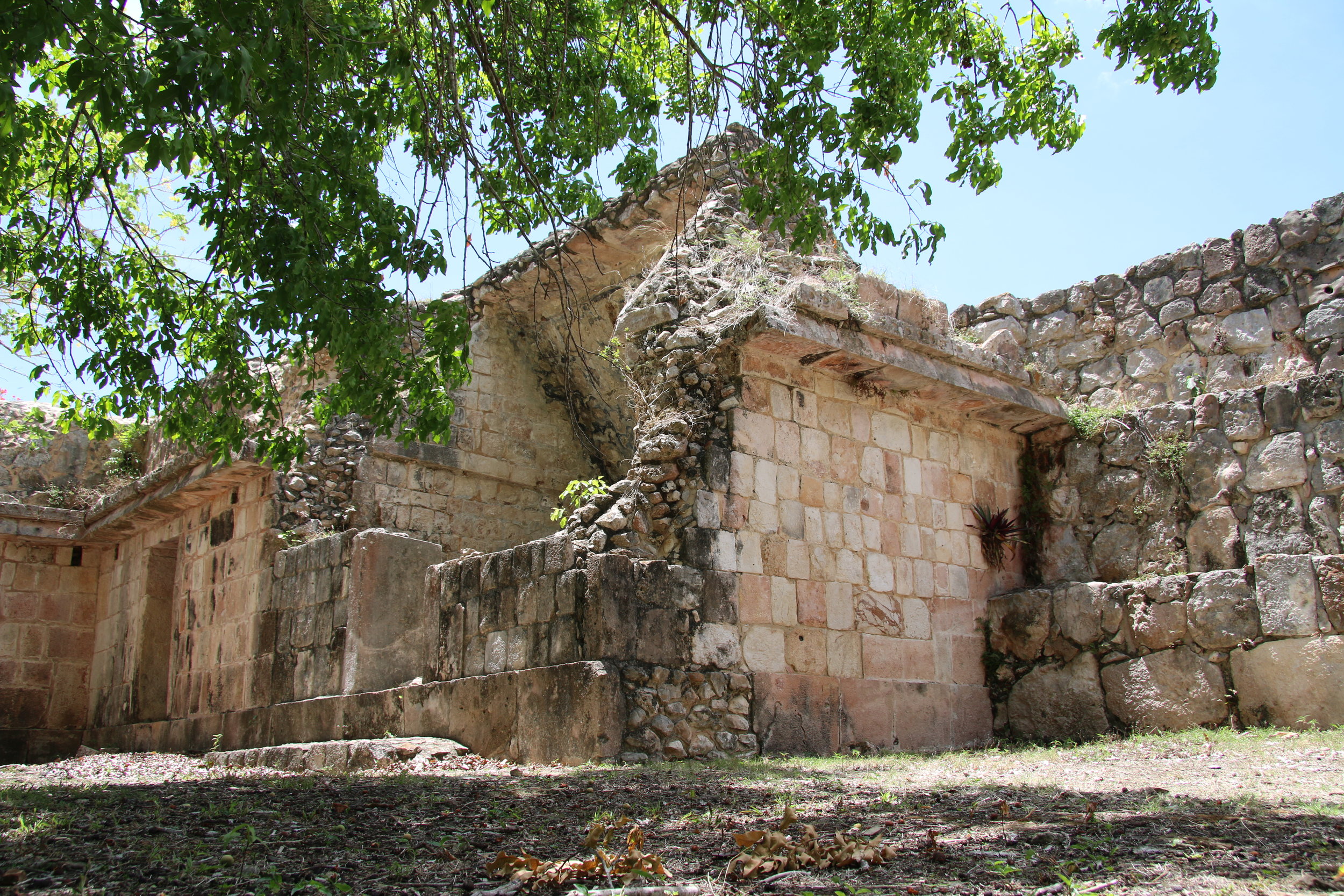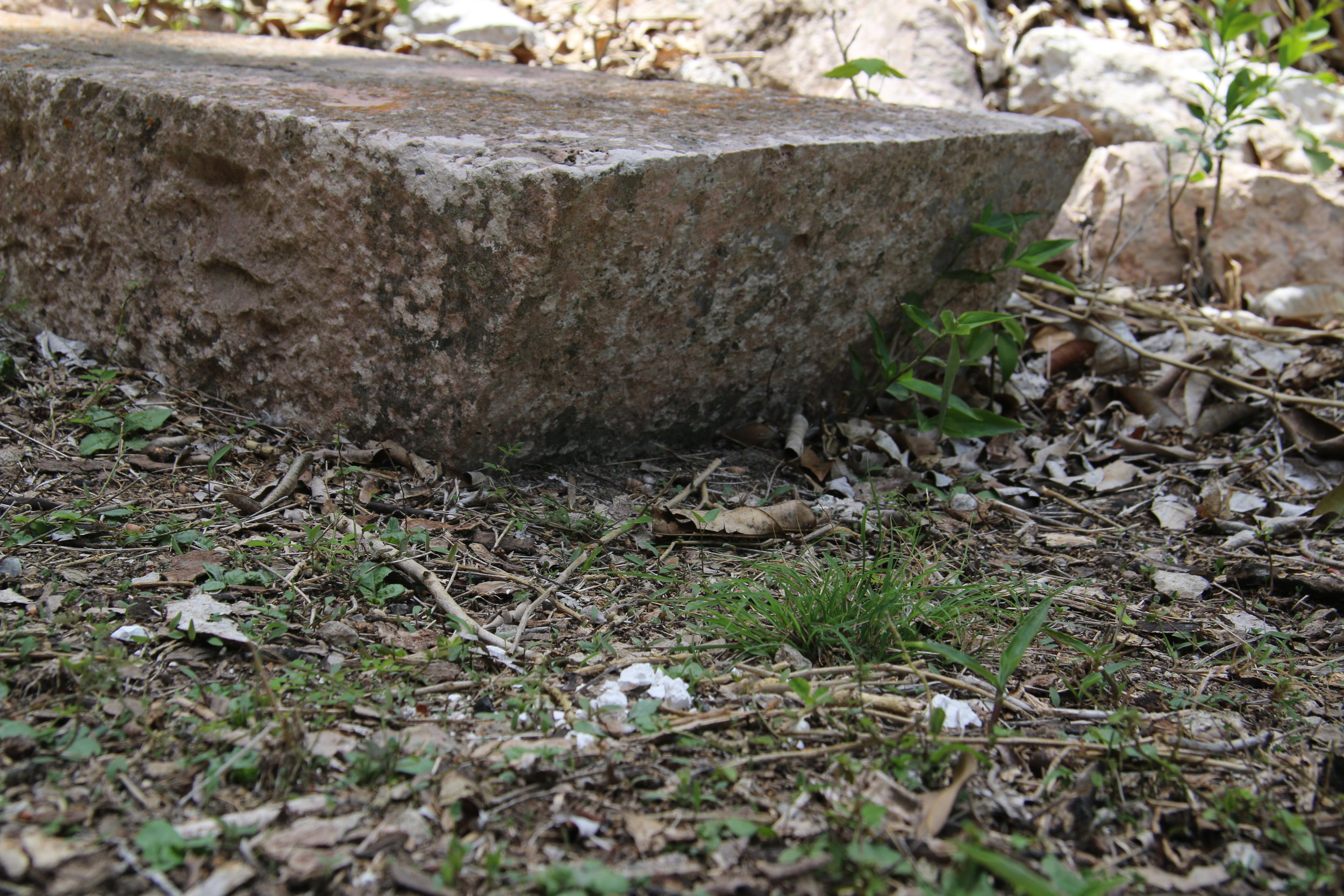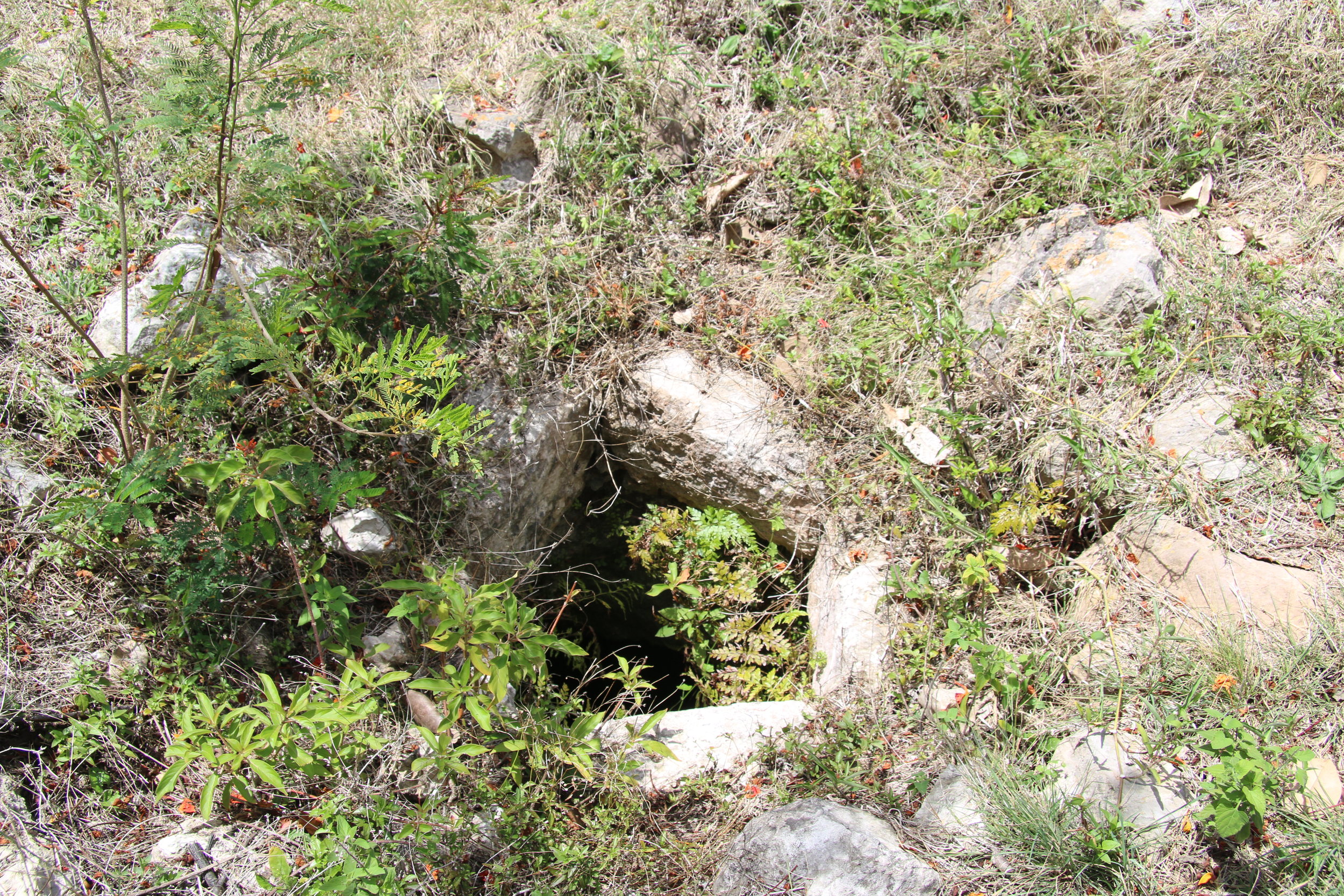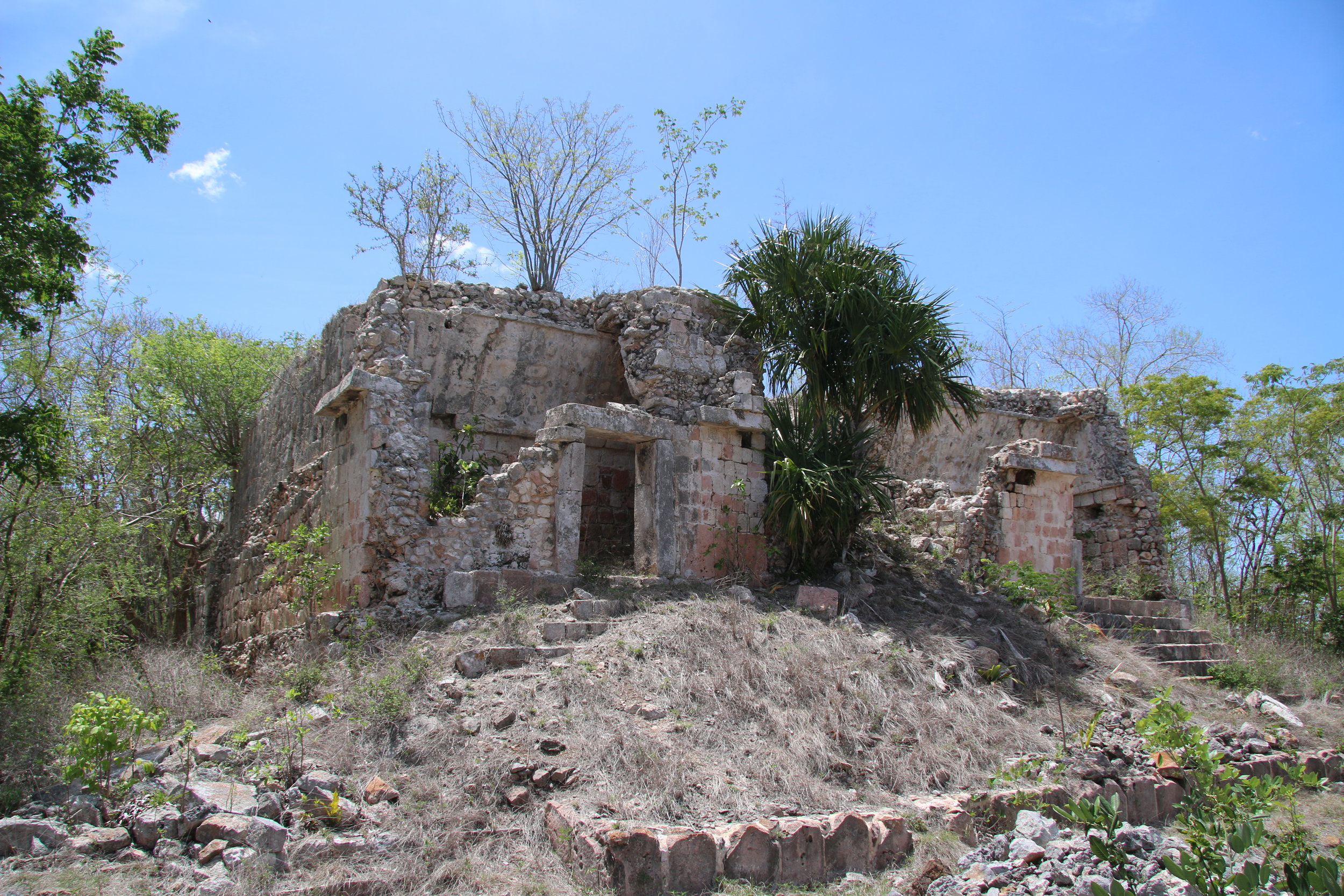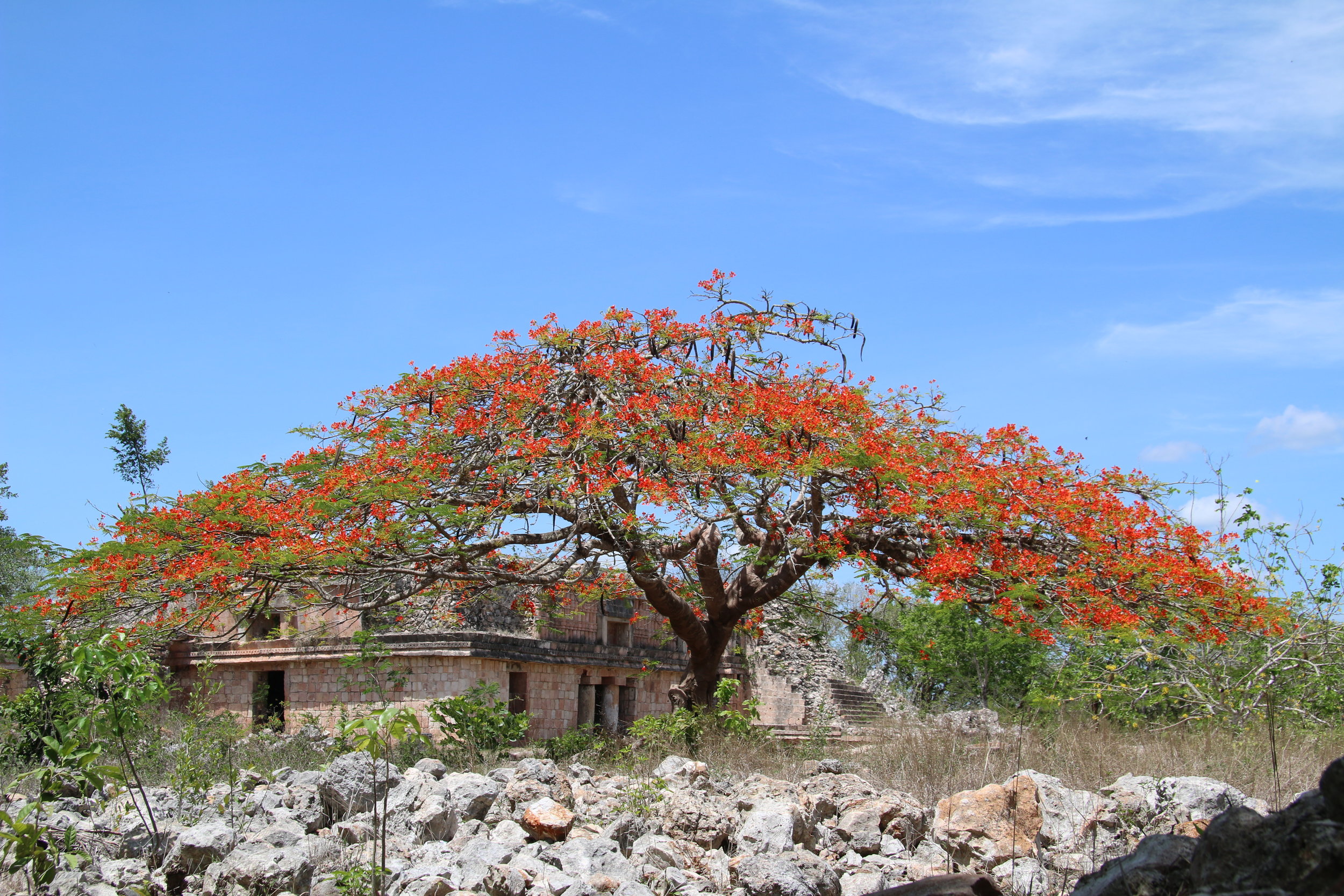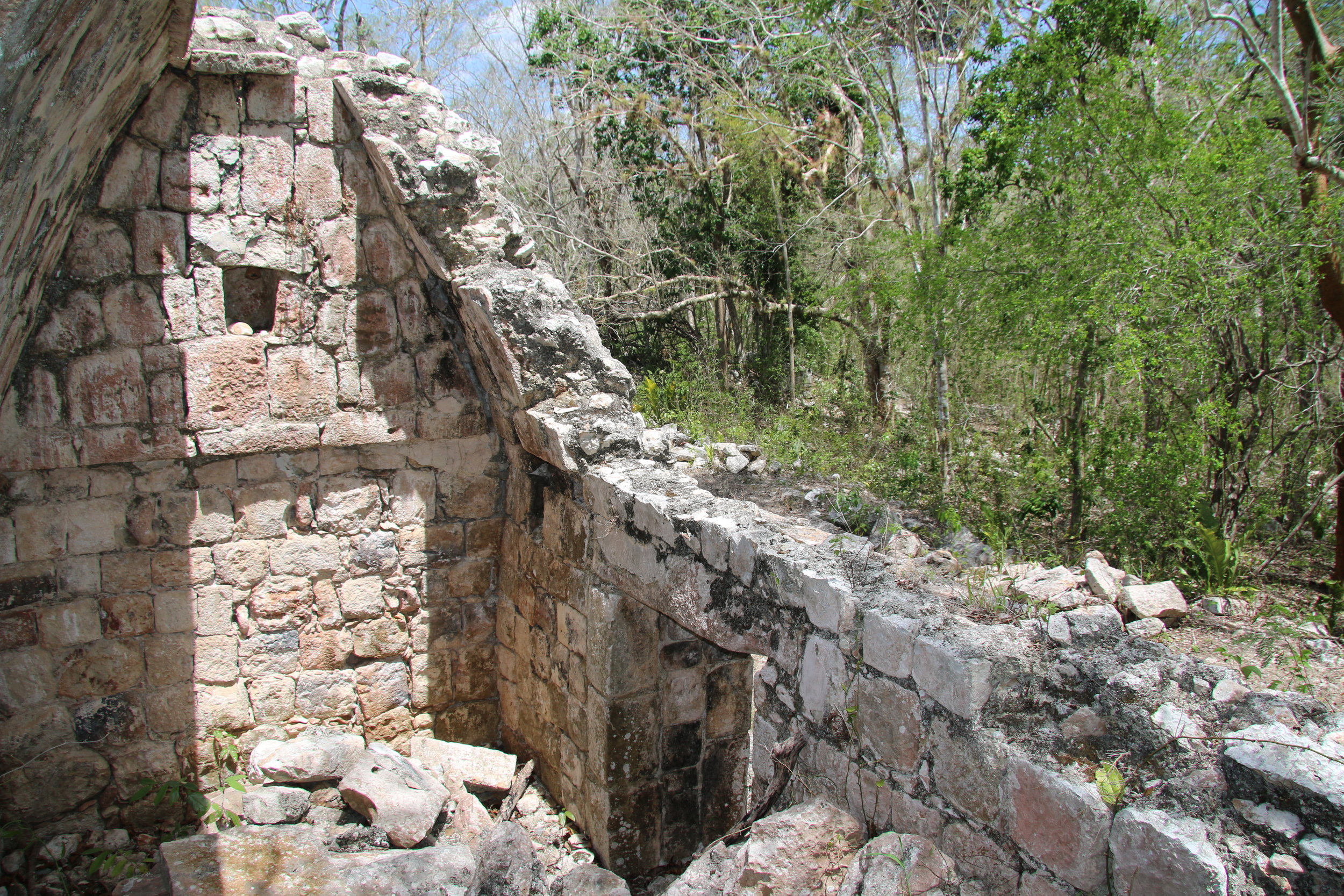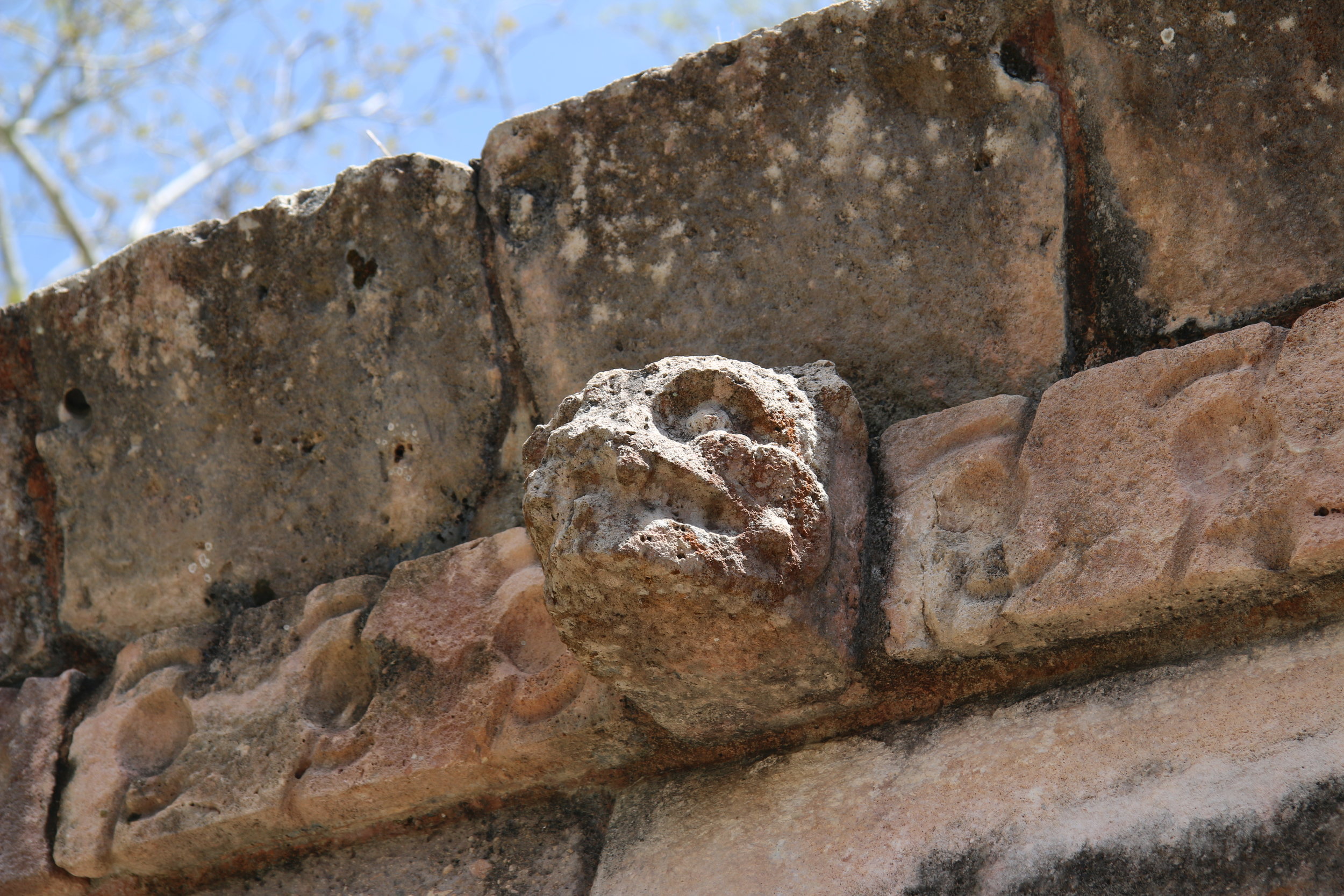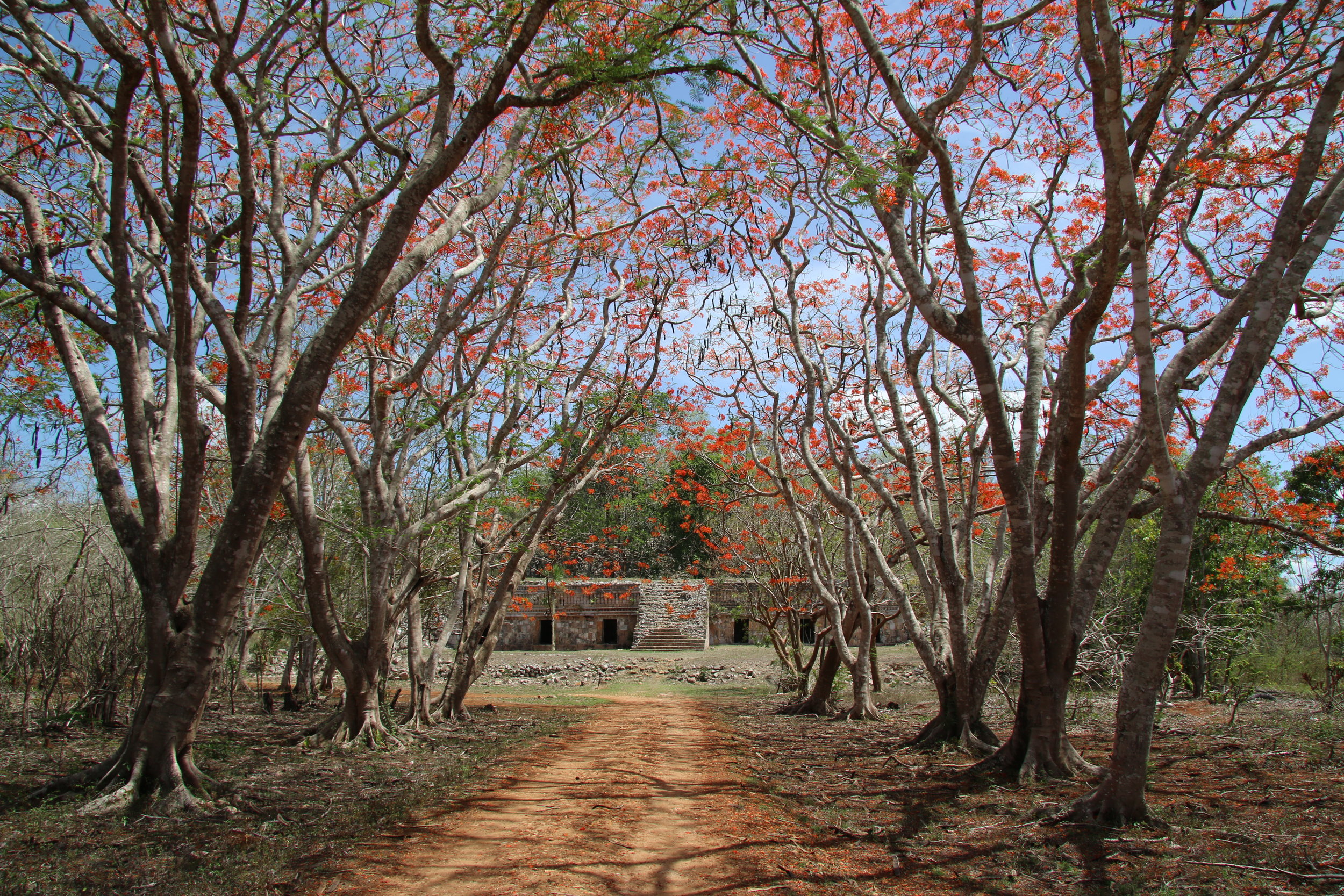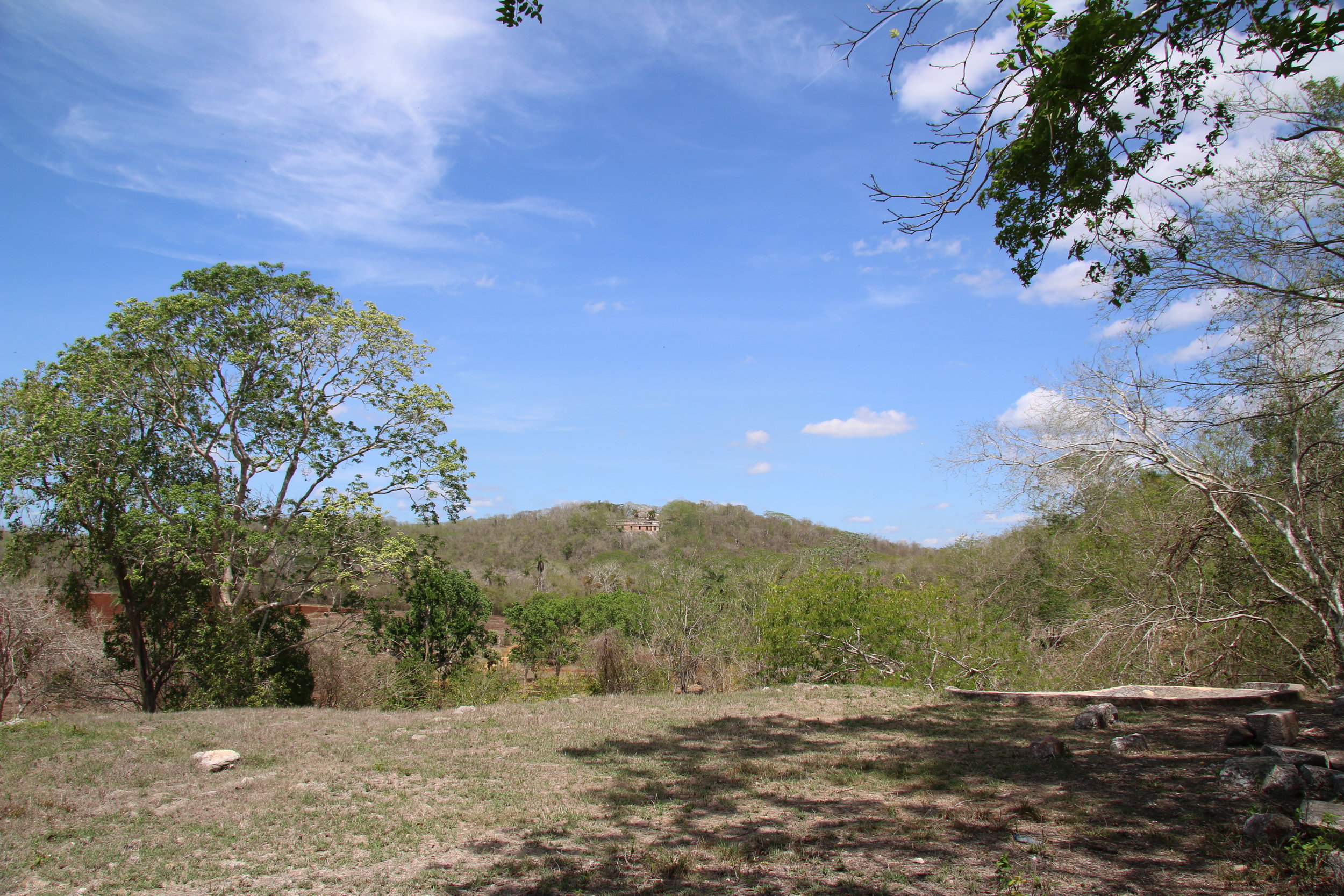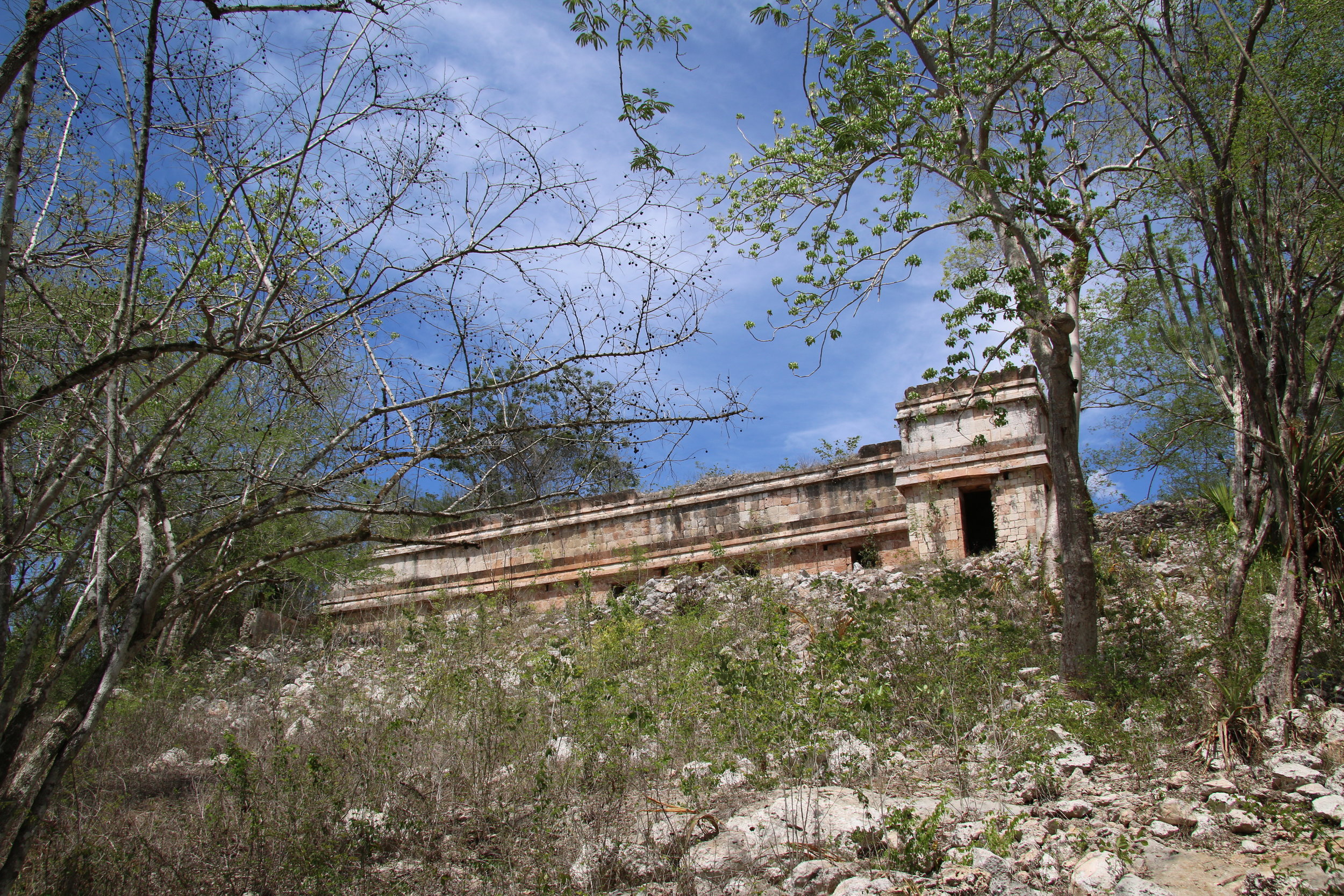Yaxunah Chef Rosalia Chay Chuc and her famous box keken (hairless pig) cochinita pibil. Out of this world!
Inspired and motivated by having seen her on an episode of Netflix Chef’s Table BBQ series, I decided that this was definitely a destination worth checking out as someplace new and different we could visit, and the promise of exquisite food made the decision so much easier.
Yaxunah is a tiny village about 25 minutes from the world-famous Chichen Itzá, where you are immersed in the peaceful feel of a Mayan village, and far removed from the crushing commercial activity, the mercenary official and unofficial guides, the nauseating noise of jaguar whistles and a million trampling feet of red-faced tourists from Cancun.
In Yaxunah you can feel time slow down; you can breathe in the oppressive oxygen-laden air of the lush vegetation everywhere and appreciate friendly locals who immediately smile and return a wave.
An amazing roofless church in town. No mention of it’s history anywhere on the many sites that offer info on Yaxunah. Caste War? Rain? Gilberto? If anyone knows what happened to this church, let me know!
There is a Mayan archeological site within walking or biking distance from the village, blessedly free of a gift shop, an INAH marker or a ticket booth. Villagers administer the site and sell a few locally made wares including honey on the grounds. There are no ridiculously translated-into-English signs like there are at Uxmal or Chichen. “Not Rise to Structures” is not on display here and you can explore at your own pace or hire someone local, if you prefer. The site is small, but interesting and includes a ball court as well as other platforms and altars, for the most part reconstructed. There is jungle everywhere and on a pandemic kind of visit, with few other humans around there are bird as well to be observed.
While there, I observed a couple arrive on a motorcycle. They dismounted and began to climb the largest structure, a pyramid-like altar about 20 meters or more high. Thinking they were up to some romantic hany panky I made a remark to that effect to one of the caretakers.
“No” he corrected me. “Están subiendo para hacer una llamada”.
That’s how I found out about an interesting function of the highest structure at Yaxunah: it is used as a telephone “booth” as it has cell phone reception when there isn’t any down below, including in the town.
Here are some quick shots of the Mayan site of Yaxunah from October 2020, day of my visit (text continues below):
In the town there is a spectacular cenote surrounded by a true jungle of trees and vines and stone stairs heading down to the water, which was high at the time of my visit. There is also an attractive cultural center that, for the time being is shut down to avoid any COVID-related issues, where one can learn about the history of the area (think Caste War drama) as well as the culinary prowess of the local cooks.
Speaking of food, the trip here was inspired by Rosalia Chay, a local chef who was “discovered” by Merida celebrity chef Roberto Solis of Nectar fame, who was in the area scouting for ingredients and meat in particular. His visit prompted more visits from other chefs and one thing led to another and a Netflix crew showed up and filmed a segment, catapulting her into instant worldwide recognition.
She still cooks for regular mortals like us and so we took in the full experience, from visiting her hair-free piglets to digging up chachak waj (tamales) cooked underground and savoring the exquisite flavor of her cochinita pibil and relleno negro. She is happy to share her knowledge with anyone who asks and like a proper Mayan lady, wastes no time with useless banter.
“Can we buy some of the tamales to take home?”
“No, those are for the family”
“OK”
The pib, an underground cooking pit that is typical here is where the magic happens and she uses branches of the pixoy tree to add the smoky flavor to the foods cooked among the hot stones of the pib. As a visitor, if you are so inclined you can help uncover the cooking pit and extract the goodies waiting for you, hot, fragrant and delicious. Everything she makes from scratch and her own property, from the pork to the salsas to the refreshing agua de lima to accompany your meal, taken in what used to be her home, a thatched palapa now set up as a dining room with pretty ceramic plates and colorful table runners on a communal table.
